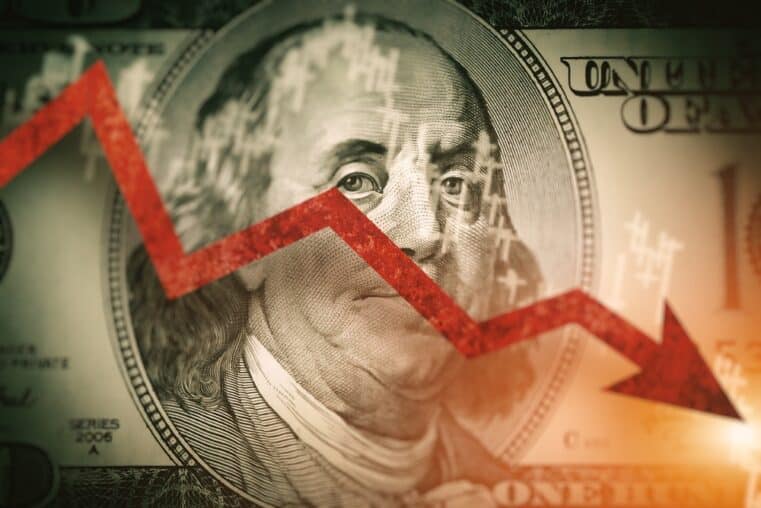Russia is not the only European country buying massive amounts of gold. Poland (an EU member) just added to its gold reserves, while Hungary, in a surprise move, boosted its gold by 1000%.
Got Gold?
Gold prices have been slammed over the past year, nearly reaching its 2017 lows. So it may (or may not) come as a surprise that Hungary’s central bank--Hungarian National Bank--just announced that it boosted its gold reserves by 1,000%!
Here are the details:
- Last month, the Hungarian National Bank held only 3.10 tonnes of gold.
- In October, Hungary’s central bank added 28.4 tonnes to their gold reserve.
- 31.5 tonnes from 3.10 tonnes is a 1,000% increase.
Not only had Hungary maintained its reserve levels since 1986 before this move, it now holds as much physical gold that it had once held 70 years ago.
The central bank released additional statements in the form of a press release. The entire translated release is included at the end of this article. Here are a few key highlights:
“In view of the long-term national and economic strategy goals...Hungary has decided to increase the gold reserves of the country.
...The possession of precious metal within the country is in line with international trends....
In keeping with the historical role of gold, gold remains one of the safest instruments in the world, and, even under normal market conditions, provides a stability and confidence-building function.
The role of gold reserves in the nation and in the nation’s economy strategy is becoming more and more appreciated while both the possession and the increase of nations’ precious metals holdings appears to be decisive international trends.
Gold reserves are held for short-term investment and / or long-term stability purposes...The current decision...was led by the goal of stability, and there are no investment concerns behind the holding of gold reserves.
Gold is not only for extreme market environments, structural changes in the international financial system, and deeper geopolitical crises. Gold also has a confidence-building effect in normal times, that is, gold can play a role in stabilizing and defending.
Gold is still considered to be one of the world’s safest assets, whose characteristics can be attributed to gold’s unique properties such as a finite supply of physical gold, and lack of credit and counterparty risk given that gold is not a claim against a specific partner or country.
Hungary is not the only country that has considerably boosted its gold reserves. According to Reuters, Poland too had joined in, placing it alongside Hungary, Austria, Germany, and the Netherlands--countries that had significantly upped its gold purchases and repatriation efforts.
In September, Poland purchased 4.4 tonnes of gold, raising its reserves to 117 tonnes. With most of Poland’s reserves held at the Bank of England, one wonders how long before Poland repatriates its reserves, similar to what Austria had been doing over the last three years.
International Gold Buying Trend Signals a Boom In Gold Prices
Europe’s central banks see their efforts to increase gold reserves as part of a larger international trend toward safety and financial stability. In the words of Hungary’s central bank “Gold is still considered to be one of the world’s safest assets.”
In light of the current trade disputes, geopolitical tensions, and uncertainties in the domestic stock market, safety is what every investor needs. Central banks across the globe are anticipating major economic turmoil, hence the need for stability which only gold can offer.
As an investor, it might be wise to follow suit before it’s too late.
When central banks resort to the old and time-tested practice of flocking to gold for safety, it typically means one of two things (or both): they are anticipating a turmoil that is beyond their ability to influence or control; or, that their financial models designed to manipulate their domestic economy are no longer working as effectively. Either way, gold signifies an overwhelming need to hedge.
On the positive side, as more and more countries turn to gold, this buying trend also signals a boom in prices for the yellow metal.
If you are an investor who values security in your portfolio to hedge against inflation, market volatility, and economic uncertainty, now more than ever is the time to buy gold.
The entire (translated) transcript of the Hungarian National Bank’s press release:
“Budapest, October 16, 2018 – In view of the long-term national and economic strategy goals, the Monetary Council of the National Bank of Hungary has decided to increase the gold reserves of the country.
As a result, in October 2018 the Bank’s precious metal holdings were raised from the previous 3.10 tonnes to 31.5 tonnes, a tenfold increase. This is the first time that the Hungarian National Bank has bought gold since 1986.
Following the substantial increase in the Bank’s gold reserves in physical form, its repatriation has already taken place. The possession of precious metal within the country is in line with international trends, supports financial stability and strengthens market confidence in Hungary.
In keeping with the historical role of gold, gold remains one of the safest instruments in the world, and, even under normal market conditions, provides a stability and confidence-building function.
With current holdings of 31.5 tonnes gold reserves, valued at approximately $ 1.24 billion, this size of holdings approaches the historical level that was held by our country at the time of the “golden train”. Within the overall international reserves of the Bank, the share of gold reserves has now risen to 4.4%, which corresponds to the average of non-euro area Central and Eastern European countries.
The role of gold reserves in the nation and in the nation’s economy strategy is becoming more and more appreciated while both the possession and the increase of nations’ precious metals holdings appears to be decisive international trends.
This gold purchase process, based on the strategic decision of the Hungarian National Bank, has increased the domestic gold reserves to 31.5 tonnes. The raising of the gold reserve and the returning of the gold in physical form to Hungary took place in the first half of October 2018.
Increasing and repatriating gold reserves can be considered a significant step in economic history. Since the founding of the Hungarian National Bank in 1924, gold reserves have been maintained, but the stock of that gold has fluctuated considerably over the decades, depending on the purpose of why it was held.
At the end of World War II, Hungary received some 30 tonnes of gold bars and gold coins on the MNB’s legendary “gold train” in the Spital am Pyhrn in Austria. This amount was fully returned to the country after the war while providing cover for the introduction of the new currency of the country, the Forint, thus supporting financial consolidation and the stabilization of the post-war Hungarian economy.
At the end of the eighties, Hungary’s gold reserves, driven by short-term investment objectives, fluctuated between 40 and 50 tons and then, at the time of the change of regime (between 1989 and 1992), the ruling central bank executives decided to reduce to a minimum level of about 3.1 tons, which was the level at the end of September 2018.
With the decision of the MNB today in October 2018, the holdings of 31.5 tonnes of gold reserves are now the same as the level of the stabilization period of 1946.
Gold reserves are held for short-term investment and / or long-term stability purposes by national central banks. The current decision of the Hungarian National Bank was led by the goal of stability, and there are no investment concerns behind the holding of gold reserves.
Gold is not only for extreme market environments, structural changes in the international financial system, and deeper geopolitical crises. Gold also has a confidence-building effect in normal times, that is, gold can play a role in stabilizing and defending.
Gold is still considered to be one of the world’s safest assets, whose characteristics can be attributed to gold’s unique properties such as the finite supply of physical gold, and lack of credit and counterparty risk given that gold is not a claim against a specific partner or country.
Over the past few years, more and more countries have decided to continue to play a decisive role in the use of gold as a traditional reserve asset, and have raised their gold reserves. This course of action was followed by Poland [a neighbor of Hungary], in spite of the fact that Poland had already one of the highest gold reserves in the region.
When raising domestic gold reserves to 31.5 tonnes, the MNB also paid attention to the international and regional role played by gold in central bank reserves. As a result, the Hungarian gold reserve have now increased to 4.4% which is in line with average international reserve ratio for gold for the Central Eastern European region central banks. This move from the end of the international rankings to the middle of the rankings has progressed, both regarding size and proportion of gold reserves.
On the occasion of the announcement, the National Bank of Hungary has also published a “Golden Book”, which gives an insight into decisive historical periods of Hungary’s gold, such as centuries of golden coins, the rescue of our national treasures by gold trains, and the recent homecoming of the country’s gold reserves.”
|
![invest in gold Definitive Precious Metals [Download] Now](https://dedollarizenews.com/wp-content/uploads/bb-plugin/cache/invest-in-gold-panorama-e46c3f171271bb07d5077d476af6b176-wobrdnx495fv.png)











